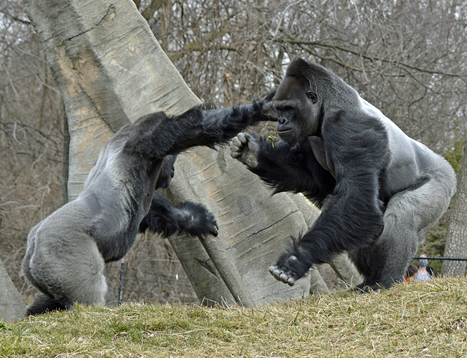How Do Gorillas Show Aggression?
Understanding the behaviors of gorillas, particularly how they express aggression, is essential for both wildlife enthusiasts and those involved in conservation efforts. Gorillas are often seen as peaceful giants, but like all animals, they exhibit aggressive behaviors under certain circumstances. This insight can help us foster better coexistence with these magnificent creatures.
Understanding Gorilla Aggression Triggers
Gorillas typically show aggression in response to specific triggers, such as territorial disputes, mating competition, or threats to their group. Male gorillas, especially silverbacks, assume dominant roles and will react aggressively to protect their families or territory from perceived intruders. Understanding these triggers helps researchers and conservationists create safer environments for both humans and gorillas, minimizing conflict and enhancing cohabitation.
Body Language and Signals of Aggression
Gorillas use various forms of body language to communicate their feelings, especially when it comes to aggression. Signs such as chest beating, intense staring, or displayed teeth can indicate a gorilla’s intentions. By recognizing these signals, observers can gauge the emotional state of gorillas and respond appropriately, reducing the likelihood of escalation. Knowledge of these behaviors is invaluable for those working with gorillas in sanctuaries or wildlife reserves, ensuring the animals feel safe and secure.
Aggression as a Social Tool
Interestingly, aggression in gorillas isn’t solely a negative behavior; it can also serve as a social tool within their groups. For example, challenging others for leadership roles or establishing social hierarchies is often resolved through aggressive displays rather than physical violence. This form of communication helps maintain order within the troop while allowing individuals to assert their status without causing significant harm. Recognizing this aspect of gorilla behavior can shift our understanding of aggression from merely a threat to a vital part of their social structure.
Conclusion
Gorillas are complex creatures with intricate social behaviors, including aggression. By understanding how they express these behaviors and the reasons behind them, we can better appreciate their role in our ecosystem and work towards harmonious coexistence. If you’re fascinated by gorillas and want to learn more, consider visiting a local wildlife sanctuary or exploring documentaries that showcase their behavior in the wild. Each step we take toward understanding these magnificent animals brings us closer to ensuring their future.

